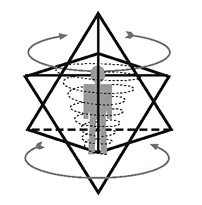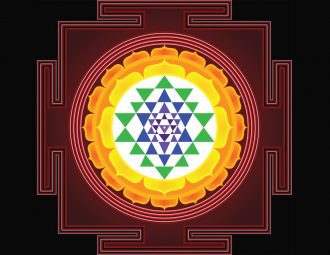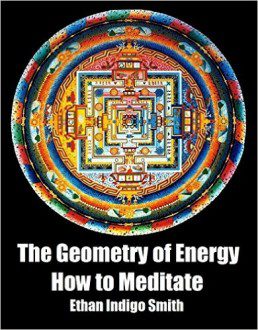

| Online: | |
| Visits: | |
| Stories: |

| Story Views | |
| Now: | |
| Last Hour: | |
| Last 24 Hours: | |
| Total: | |
The Sacred Geometry of Meditation and Buddha Meditation
The Geometry of Energy and Meditation of Buddha
Contributing writer for Wake Up World
A mandala is a visual symbol often utilized in meditation practices and teachings. The mandala symbol itself is a geometric construction of points, lines, planes and solids symbolizing the universe. Mandalas are geometric designs depictive of the universe specifically. Other designs are similarly meditation tools, but may not be mandalas specifically. The visually conceived geometric symbols are visual meditation tools. A visual meditation tool is called a yantra. Mandalas and all other yantras are visual meditation points of concentration. Yantras are visual meditative tools similar in value to points of concentration. Below is the sri yantra, sri meaning king or most important.

A mantra is the audio version of a mandala. A mantra is an audio meditation tool. Whether the sound of the mantra is a single syllable tone or a series of lengthy metaphysical musings, a mantra is an audio meditation tool. Mantras, as sound vibration, are wavy linear vibrations of connection.
The terms asana and mudra both reference physical positioning. An asana is a body posture as a meditation tool, and a mudra is a hand gesture or posture as a meditation tool. Asanas and mudras enable our own bodies to become a geometric representation of a meditation tool. The postures are physical meditation tools transforming self into one’s own geometric figure or plane among the space and sensitive to the space of self and surroundings.
Tantra means unification, or looming/weaving together principles and practices, instruction and individual action. Tantra unites entirety. Tantra signifies confluence and integration; a fusion. It is Sanskrit for loom, the device which weaves together string into cloth. It is an ancient word with many properties and has been variously used to describe the knots of strings weaved together in a rug, and the cord on which sacred mala bead necklaces were strung, (Mala beads are Tibetan prayer necklaces of 108 beads used to assist mentally or vocally repeating a mantra 108 times.) and practices of unification of individual with the universal. Today the word tantra is often used in reference to the union of lovemaking. Though there is also a specific type of yoga called Tantra Yoga it means unification.
There is the potentiation of the unification of principle and practice. There is the potentiation of tantra of yantra, mantra and asana. And there is certainly the lesson of the potentiation of Yin Yang tantra. The combination of Yin and Yang potentials and energies within leads to all sorts of aspects of development. This can be energetically understood in the idea that there are only two types of energies, straight and circular, straight for Yang potentials and circular for Yin potentials. It can be understood on a tangible level that rest and work are both required. When straight and circular energies combine, a spiral results. A spiral is one of, if not the highest expressions of energy.
More broadly and generally, tantra notes a mutually accepted connection, a tied knot of intertwined being, like lovemaking, but not necessarily beginning with or limited to the act of lovemaking. Humanity itself is a tantra; a fused weaving knot or many strings, of many instructions and many individuals.
Essentially tantra is spiritual understanding of the relationship and connections between individuation and universal energies. An ancient spiritual philosophy preceding both Buddhism and Hinduism, tantra represents integration, unifying the macrocosm with the microcosm, the universal and the individual, the feminine and the masculine, the Yin and the Yang. It also refers to integrative knowledge and its continuation and building refinement through the interaction of teacher and student, signifying union and fusion; the acceptance, integration and transmutation of knowledge between individuals, like the string of life.
Tantric ideas enhance and explore metaphysical merging of ideas and energies. Tantra is the merging of the physical and spiritual, through the merging of the conceptual. In essence, Tantra is the integration of yantra (the philosophy of visual symbols), mantra (communication of audio symbolism) and mudra (our very physical posturing) each of which is important on their own and increasing so when intertwined aspects of yoga, and life. Tantra unites meditation practices and enhances the individual unity expansion with entirety of the universal.
There is not necessarily the need for a specific yantra, or specific mantra, or specific asana in meditation, however each are tools that can be used and considered, and most are most powerful when practiced in unified tantric manner, or tantric mind state. A tantric mind state recognizes unity expansion and aims toward it, rather than cultivating a mind state of separation.
No matter how one approaches meditation the unifying tantra of our meditation principles and practices bring about the unity expansion of yantra no matter. No matter our level of refinement of posture, we are always in an asana, no matter if we utilize mantra, or yantra, we for th most part still see and hear and those who cannot can still concentrate and connect. And no matter the mantra, yantra or asana, it is the principles behind and pertaining to the symbolism that contains the real power, the highest potential for tantric connection. Yantras, mantras and asanas establish your sacred space and sacred perimeter and uniting with entirety in tantric balance.
Seed of Buddha Meditation
One of my favorite meditations relates to the four dimensions of geometry, but is extracted from Buddhist lessons. It is one of the most powerful meditations I have learned and as I learned it, Buddha himself practiced and taught this meditation. I learned this meditation from a Tibetan Buddhist monk from Nepal before I considered the four dimensions of geometry applied to meditation. On later examination however the components of the meditation relate to the four dimensions of geometry.
This meditation is direct and simple, but can lead to infinitely complex profound lessons. The profundity of each of the ideas in this meditation cannot be understated. And each of the concepts has been elaborated on endlessly for centuries since Buddha, and so the presentation here is of course a simplification of the ideas and processes that might be endlessly explored and refined. And that is what meditation is all about really, our own personal inward exploration and refinement.
To begin, sit in a comfortable cross legged position on a meditation pillow. Sit for a time to simply settle into absorption and relaxation, focusing on the breath. The rhythm of the following meditation consists of mindfulness of an idea followed by mindfulness of no idea, where as much as possible we think on nothingness. The nothingness gives us a chance to relax, compared to processing the series of ideas which can all be quite intense. The process can be done in any time period. The point is to cover each idea as deeply as can be, given time or mental state circumstances.
The meditation is formed from important Buddhist concepts. Many meditations are derived from such teachings, Buddhist and otherwise, so that there are lessons in a sense for the secular, and meditation practitioners.
The first part of the meditation consists of concentration on The Four Thoughts; precious human body, impermanence, karma and samsara. This is done by focusing on the ideas through personal experiences and/or universal understandings.
The Four Thoughts not so coincidentally relate to the four dimensions of geometry. The point is symbolizes the individual precious human body, the line symbolizes impermanence, karma illustrates the circular exchange of energy and Samsara relates to the volume.
The precious human body idea essentially comes from the notion that every being is precious for spontaneous Buddhahood could happen at any time, yet humans are particularly well-endowed, for our precious human body is capable of enlightenment in a processed manner. After finding example of how we or others are precious, come to the point of gentle concentration on relaxation. Breathe in a relaxed manner after the contemplation on precious human body then proceed on to the impermanence idea, and then the pause again for gentle concentration on relaxation, and so on, taking however much time is required.
Next is Karma. Most people are familiar with the cause and effect universal law of Karma. However the final thought of the Four Thoughts, Samsara, is less widely known. Samsara is the plane of existence of suffering, of birth and death, we are all in.
The second part of the meditation utilizes concentration on The Four Immeasurables in the same pattern of mindful focus followed by relaxation. There is a modification of the Four Immeasurables order of operation in the meditation, however. They are traditionally presented as; love for self, love for others, love for the happiness of others, and love for all beings in equanimity. In this meditation process begin by focusing on love for all beings in equanimity and end with love for self.
The Four Immeasureables, like the Four Thoughts, are not so abstractly symbolic for and related to the four dimensions of geometry. Love for self is symbolic of individual point, love for others is symbolic for the linear connection, love for the happiness of others is circular and all-connecting and love for all beings in equanimity is voluminous and all-inclusive.
The third part of the meditation is Buddha breath. On every inhale imagine you are removing the ignorance and suffering of others, other people specifically, and those generally locally and globally. And on every exhale imagine you are sending them compassion and happiness. Imagine you are a conduit of Buddha or supreme consciousness. Imagine that the transmutation of suffering and ignorance into happiness and compassion is all done through you, instigated by you making the connection with above and below.
Imagine lotus flowers from Buddha consciousness being transported through you on every exhale, and on every inhale the fiery pain and suffering of Samsara is drawn into a fiery lotus flower that remains in front of you. This flower burns up the ignorance and suffering drawn into it. Finish the meditation by keeping a lotus flower for yourself, perhaps on the crown of your head, and imagining light shining through you and onto you cleansing you of any leftover negativity.
Each step of the process can take as long as you like or as long as it takes to come to a realization through the first four concepts, send love through the second set of concepts and complete the Buddha Breathing that is inhaling suffering and exhaling healing as a seed of Buddha.
In his book ‘The Geometry of Energy: How to Meditate’, author Ethan Indigo Smith explores meditation and meditative energies through the sacred dimensions of geometry. Simple and profound, it is an empowering four-step meditation designed to lead to individuation, self-development, and an enhanced understanding of energy and vibration.
Useful to meditation newcomers and longtime practitioners alike, ‘The Geometry of Energy’ provides insights into a variety of meditative processes for psychological and spiritual cleansing and enhancement.
‘The Geometry Of Energy: How To Meditate’ is available here on Amazon.
About the author:
 Activist, author and Tai Chi teacher Ethan Indigo Smith was born on a farm in Maine and lived in Manhattan for a number of years before migrating west to Mendocino, California. Guided by a keen sense of integrity and humanity, Ethan’s work is both deeply connected and extremely insightful, blending philosophy, politics, activism, spirituality, meditation and a unique sense of humour.
Activist, author and Tai Chi teacher Ethan Indigo Smith was born on a farm in Maine and lived in Manhattan for a number of years before migrating west to Mendocino, California. Guided by a keen sense of integrity and humanity, Ethan’s work is both deeply connected and extremely insightful, blending philosophy, politics, activism, spirituality, meditation and a unique sense of humour.
Ethan’s publications include:
- 108 Steps to Be in The Zone, a set of 108 meditative practices for self discovery and individual betterment, including techniques to develop balance, transmute sexual energy.
- The Little Green Book of Revolution an inspirational book based on ideas of peaceful revolution, historical activism and caring for the Earth like Native Americans.
- The Complete Patriot’s Guide to Oligarchical Collectivism, an insightful exploration of history, philosophy and contemporary politics.
- The Matrix of Four, The Philosophy of the Duality of Polarity on the subject of the development of individual consciousness.
- The controversial book, Terra-ist Letters, a work that humorously contrasts two very serious issues: the prohibition of marijuana and the promotion of nuclear experimentation.
For more, visit Ethan on Facebook and check out Ethan’s author page on Amazon.




